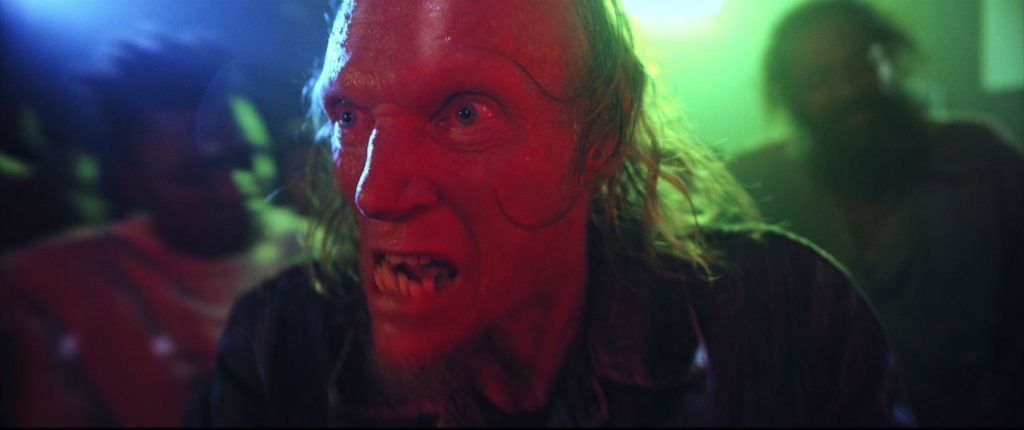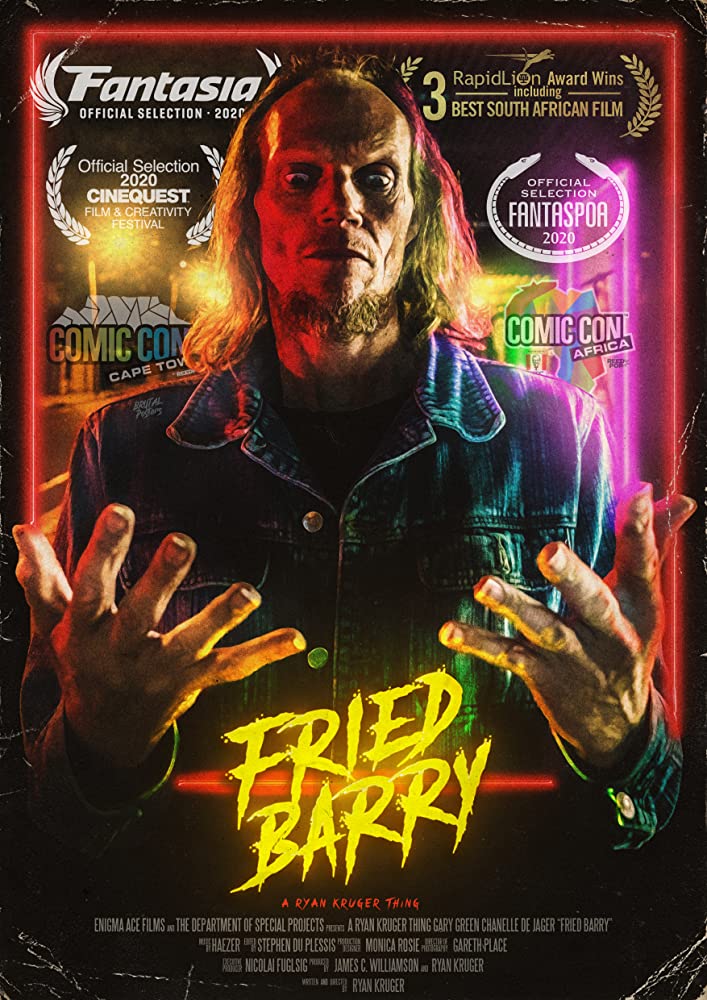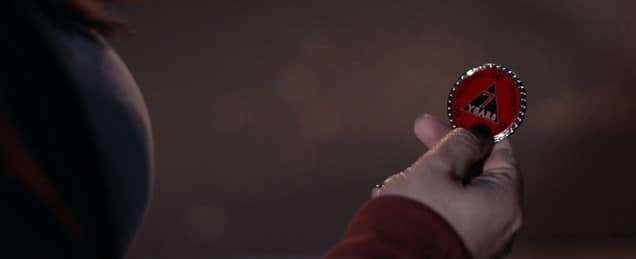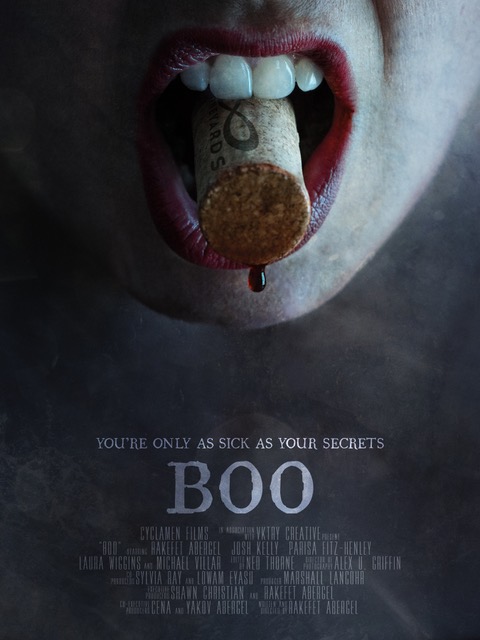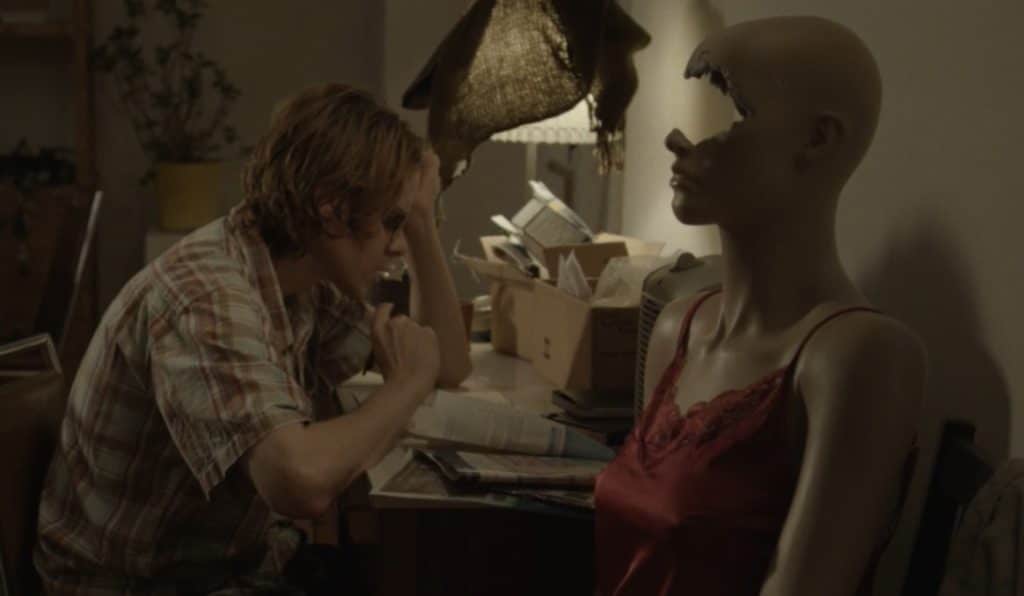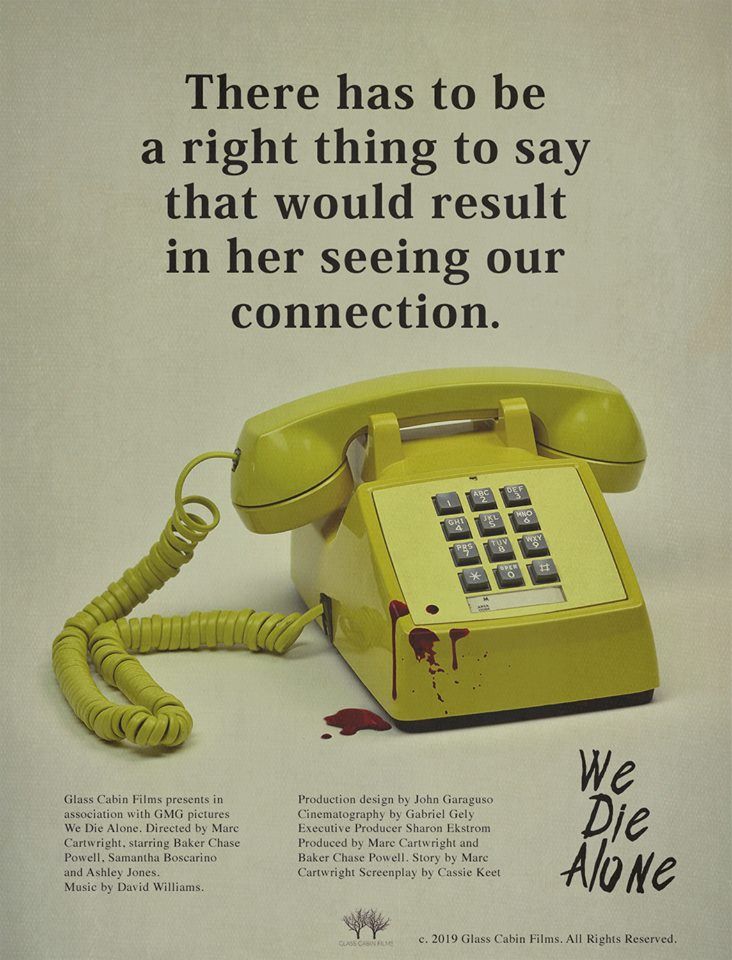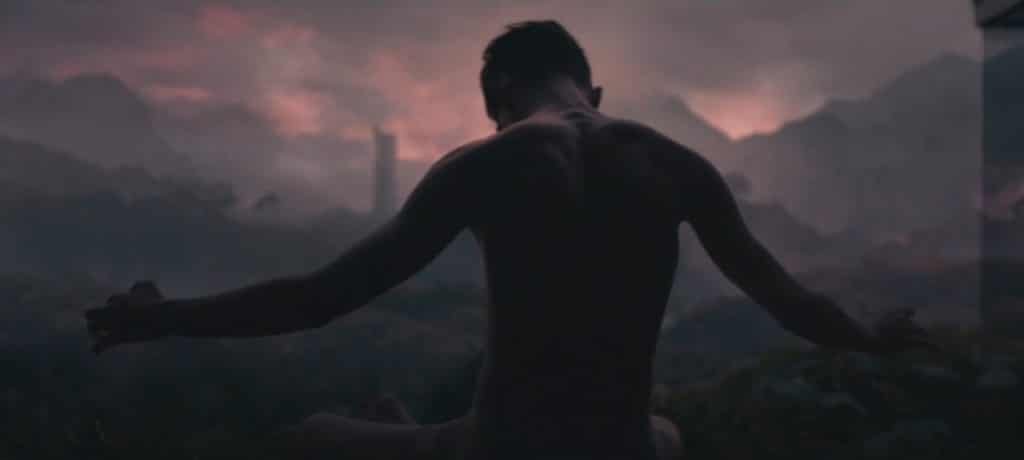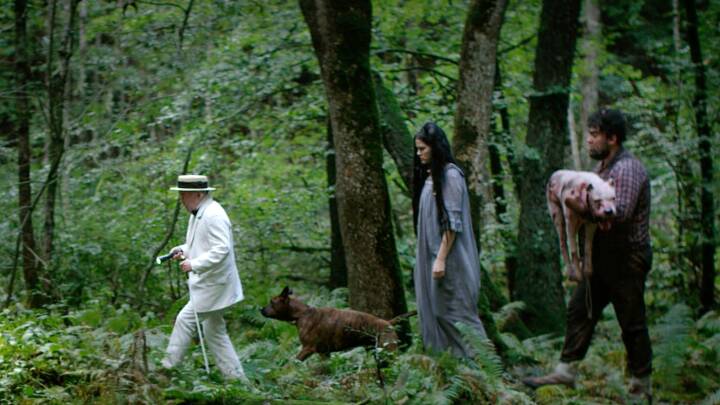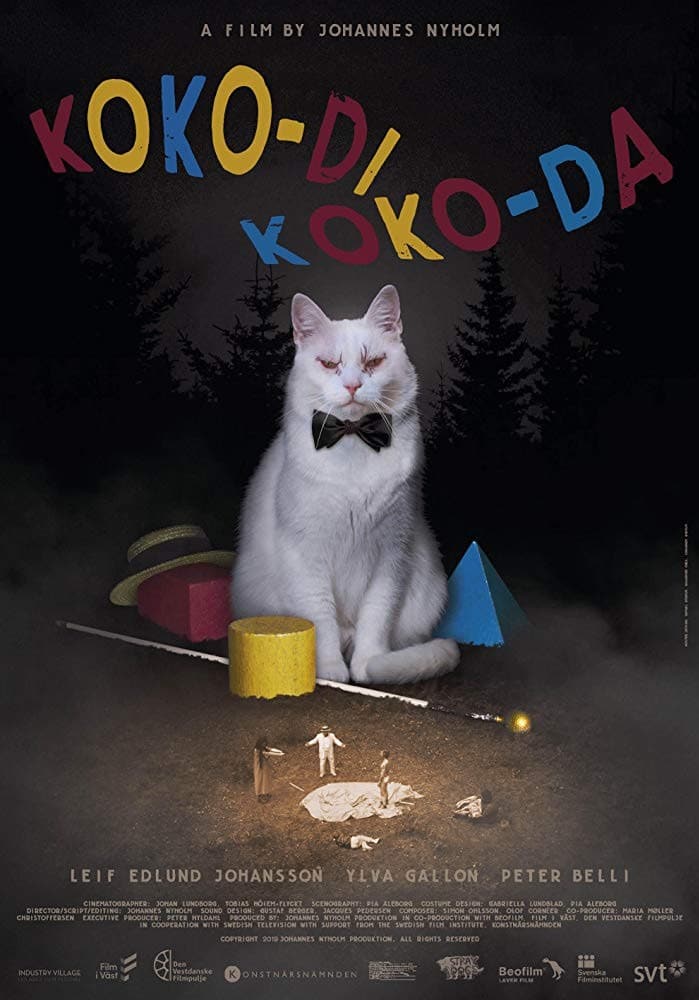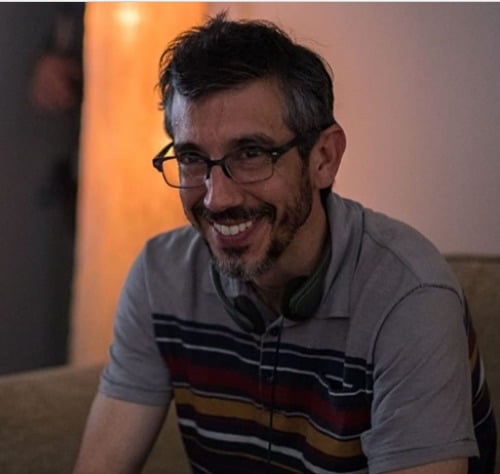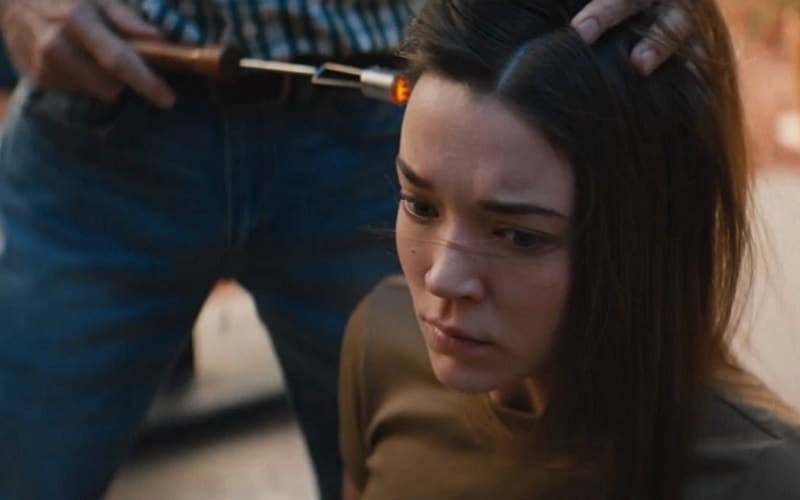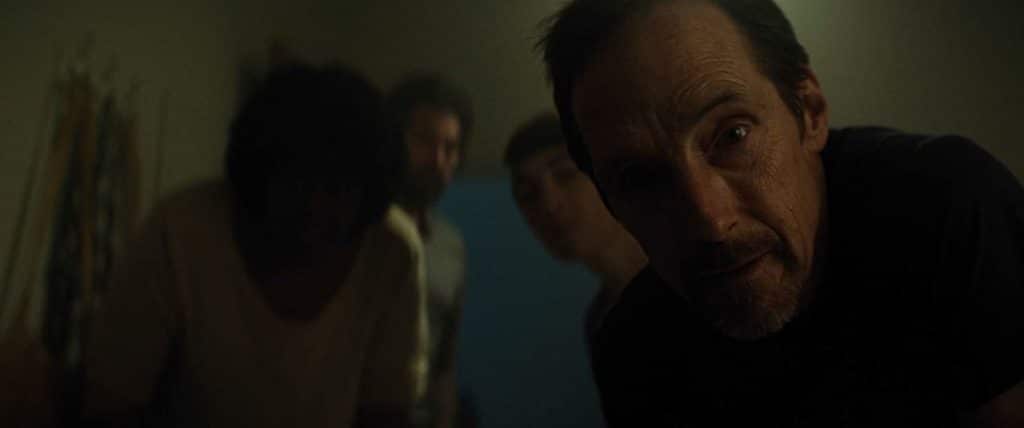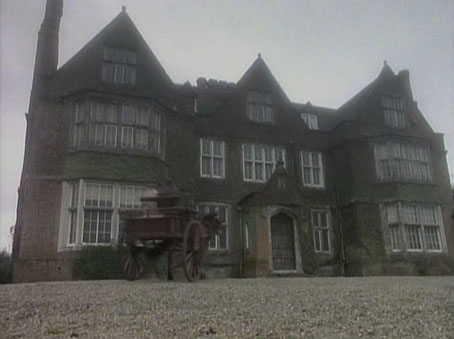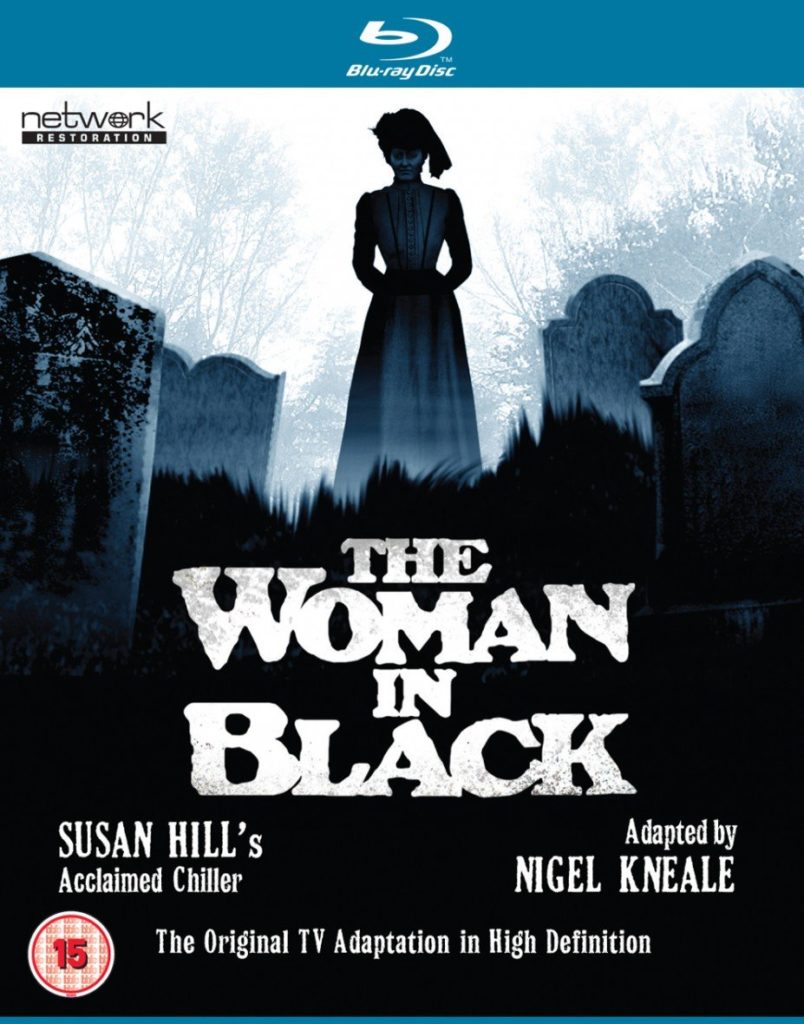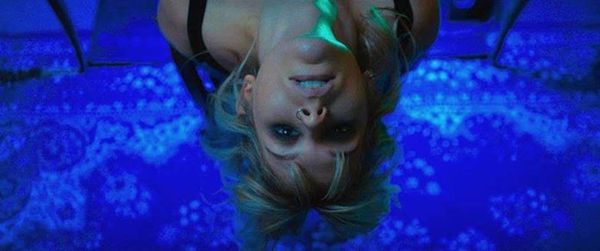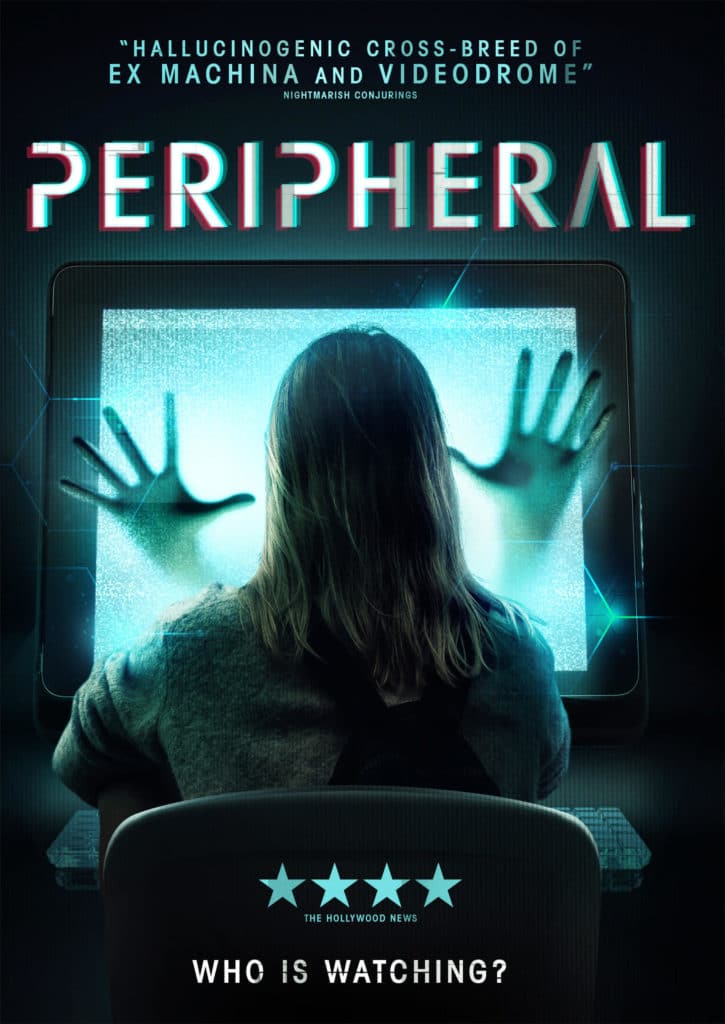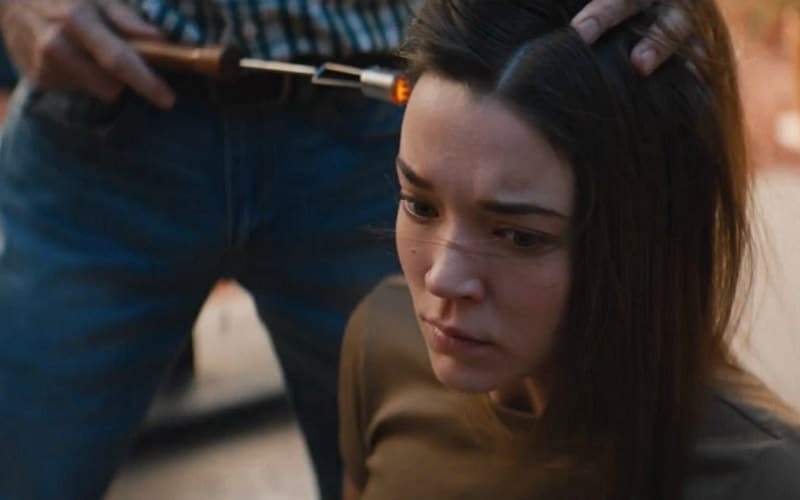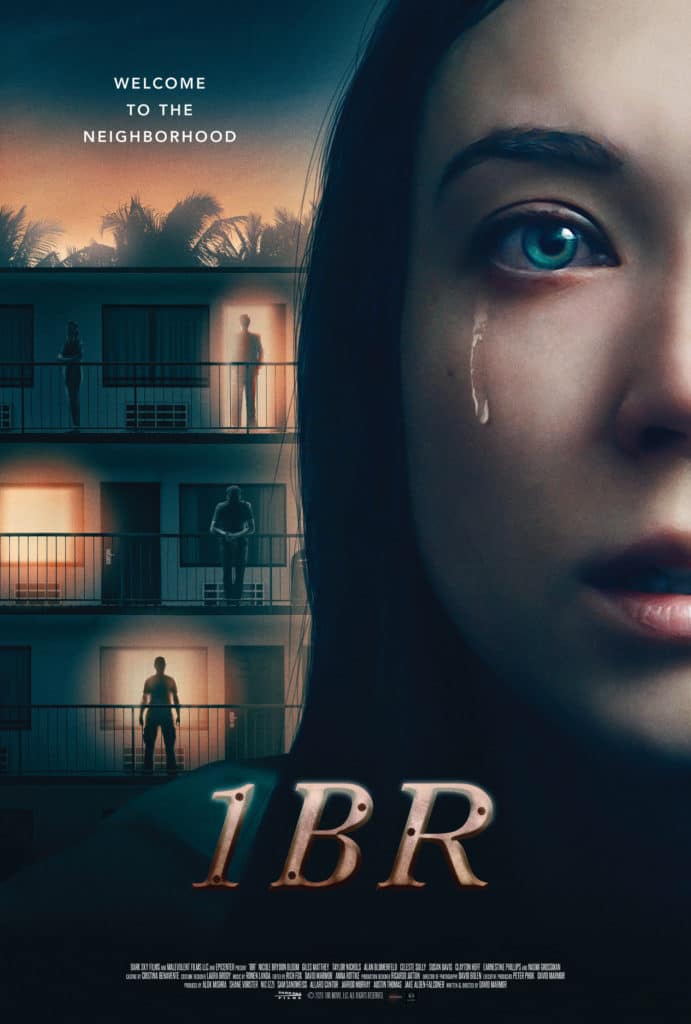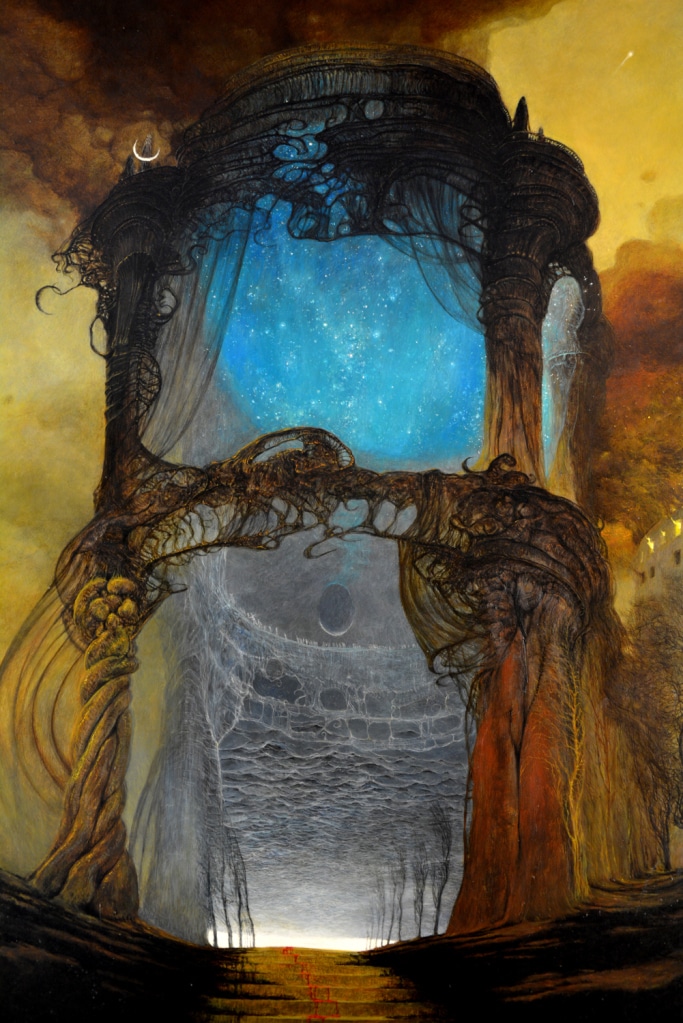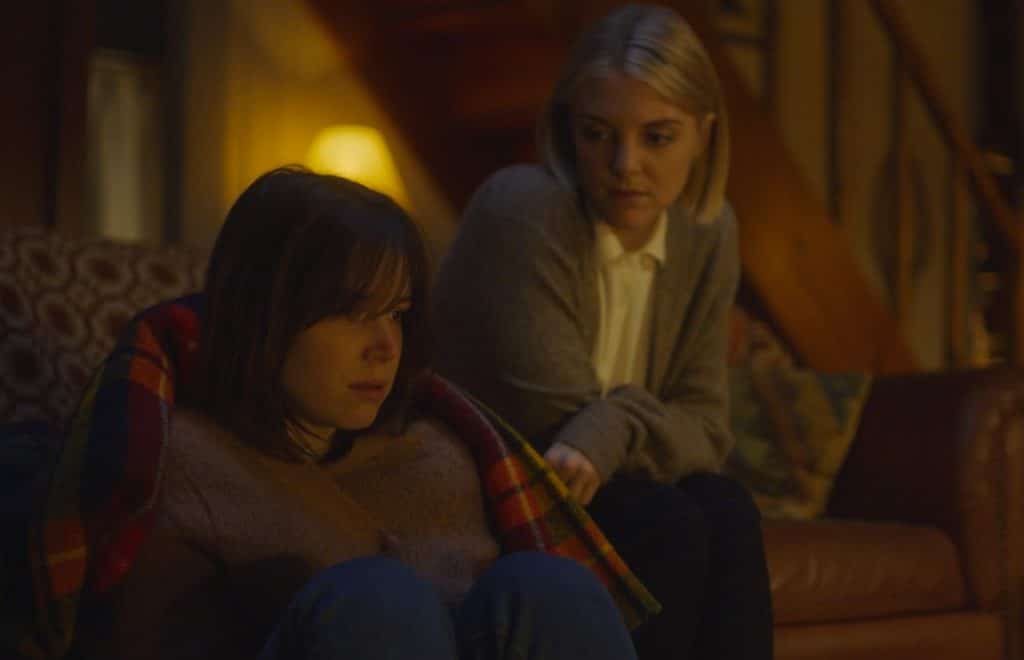
When I read the synopsis for Bleed With Me (2020), my mind jumped straight to ‘body horror’ – but that’s a term reminiscent of jarring, even ludicrous extremes, from Tetsuo to Videodrome. In truth, though, there are many quieter entrants into that genre with their own questions to ask; this brings us to Bleed With Me, where reality and dream meet very uneasily at the margins of the female body in an ambiguous, claustrophobic and economical tale. It tackles female agency and friendship in a low-key, but nonetheless at-times unbearable fashion.
Two friends, Rowan (Lee Marshall) and Emily (Lauren Beatty) head into the Canadian woods for a weekend getaway at Emily’s cabin. Yes, it’s a cabin in the woods – but it’s a cosy, well-loved family retreat, and so the site – rather than the source – of what later unfolds. Emily’s boyfriend Brendan (Aris Tyros) is already there to greet them, and things get off on a good footing. It’s clearly a fairly new friendship between the two girls, but all seems fine. At first. When Rowan thinks she sees something or someone outside the cabin whilst she’s preparing food, she accidentally cuts her finger; Emily’s reaction is a little overzealous, shall we say, but there’s no major cause for alarm at this point. The wine flows, maybe a little too much, but a generally pleasant evening is had.
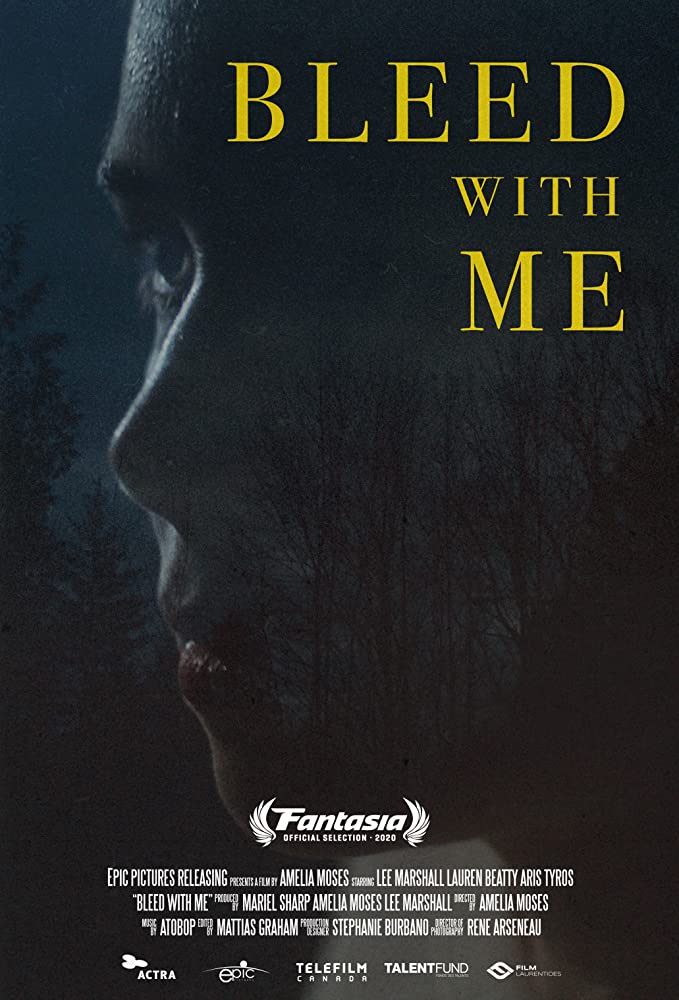
However, Rowan – clearly a damaged young woman, as the film oh-so subtly reveals to us – has some (deserved) misgivings about cramping the couple’s style, soon aided and abetted by Brendan. Her escalating anxiety gives way to disturbed sleep, and the following morning, Rowan wakes to find an unexplained wound on her forearm. She has no recollection of it; the mystery is compounded when she also sees spots of blood on Emily’s nightclothes. The cabin and its inmates begin to feel actively hostile to Rowan: is it paranoia, or a plot?
Bleed With Me is an incredibly slow burn, unsettling piece of film. For the most part, this stems not from what is shown, but from what is not: the gentle lighting, hushed dialogue and long periods of stillness, taking in the natural beauty outside, belie the ratcheting uneasy inside the cabin’s walls. It’s a very attractive film which establishes one aesthetic, only to bring this into direct contrast with the cold, blurred world of Rowan’s dreams (if dreams they are). Director and writer Amelia Moses has a skill in making the run-of-the-mill very intense and alienating.
Much of this is communicated through Rowan’s own eyes, but the film raises a number of queasy questions regarding female friendship, questions which seem to be more than solely Rowan’s. Each of the girls is keeping quiet on their true motivations; doubt and unreason begin to filter through into every word and gesture. As Rowan’s night terrors begin to segue into her days, her proliferation of strange wounds are a symbol of her unease as much as they are a cause for concern in and of themselves. The steady increase in uncertainty achieved here is quite something. Some of Rowan’s terror of her companions’ real motivations has echoes of Rosemary’s Baby, another film where a woman is left vulnerable because it’s unclear who to believe. In other respects, the film reminded me of the short story The Yellow Wallpaper – again, featuring a woman who projects her own suffering onto external phenomena. However, Bleed With Me expands these ideas, using blood as a locus for unmistakably feminine concerns, where friendships simmer and boil out of control.
This is a film which never gives up all of its secrets, and as such it may be too low on exposition for some – personally, I found it a very affecting piece of work which allows intrigue to remain, contributing to the atmosphere and style of the film as a whole. That all of this is done in one setting with a total cast of three people is all the more remarkable.
BLEED WITH ME will premiere at Fantasia International Film Festival – 2020 Digital Edition. August 26, 2020 at 7:10 p.m. EST and play again on September 1, 2020 at 3 p.m. EST
